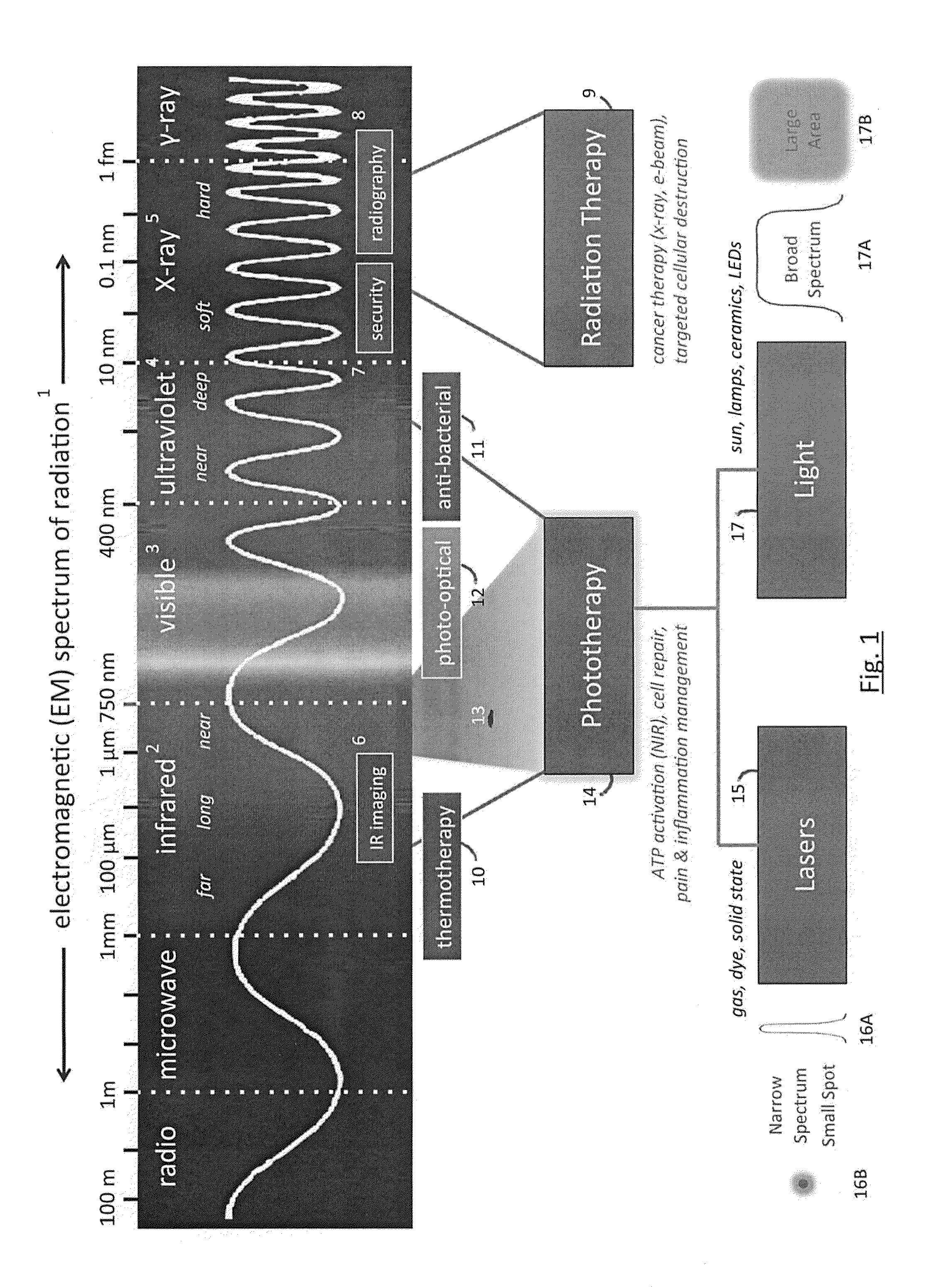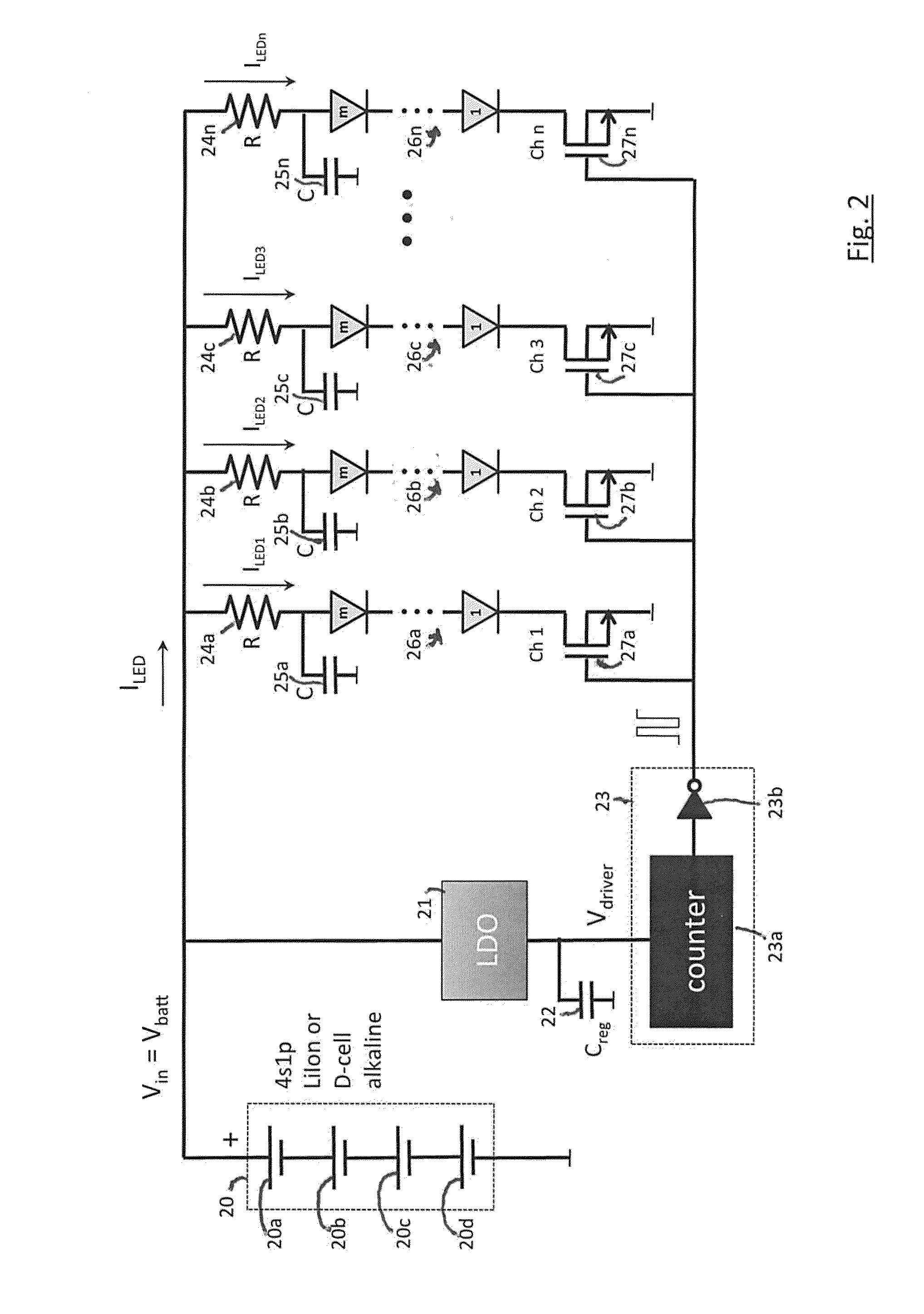Phototherapy System And Process Including Dynamic LED Driver With Programmable Waveform
a technology of led driver and phototherapy system, which is applied in the field of phototherapy system and process including dynamic led driver with programmable waveform, can solve the problems of inability to facilitate, inability to maintain consistent led operation, grossly inadequate mechanical and electrical design of photobiomodulation and medically for phototherapy, etc., and achieves the effect of expanding the flexibility of the program
- Summary
- Abstract
- Description
- Claims
- Application Information
AI Technical Summary
Benefits of technology
Problems solved by technology
Method used
Image
Examples
Embodiment Construction
Principles of Photobiomodulation
[0139]Photobiomodulation involves the controlled delivery of photons into living cells and tissue stimulating a biochemical response. When applied to medical science, the use of photobiomodulation to produce a beneficial or therapeutic result is herein referred to as “phototherapy”. A number of variables can affect photobiomodulation, including the organism, tissue, cell, or organelle being illuminated; the wavelength(s) of the light used, the absorption depth and scattering properties of the light at the impinging wavelength in the targeted and intervening tissue; the power, timing, duration, and frequency of the photoexcitation, including the potential sequencing of multiple wavelengths, the specific biochemical reaction being affected, and in therapeutic cases the nature of the injury or condition requiring treatment.
[0140]FIG. 8A schematically illustrates in cross section, the elements of a phototherapy delivery system, including a flexible circui...
PUM
 Login to View More
Login to View More Abstract
Description
Claims
Application Information
 Login to View More
Login to View More - R&D
- Intellectual Property
- Life Sciences
- Materials
- Tech Scout
- Unparalleled Data Quality
- Higher Quality Content
- 60% Fewer Hallucinations
Browse by: Latest US Patents, China's latest patents, Technical Efficacy Thesaurus, Application Domain, Technology Topic, Popular Technical Reports.
© 2025 PatSnap. All rights reserved.Legal|Privacy policy|Modern Slavery Act Transparency Statement|Sitemap|About US| Contact US: help@patsnap.com



